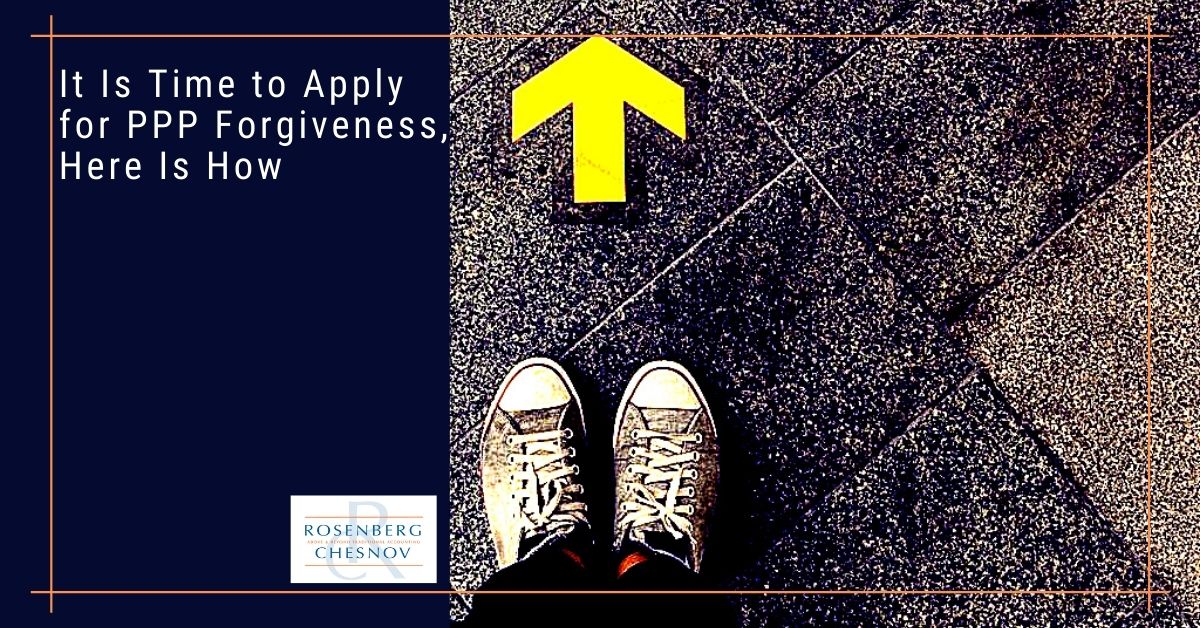

What does the Advance Child Tax Credit mean for you?
Category: COVID-19
(Updated June 18, 2020)
The best place to start is to remember that, by default, the PPP is a loan.
You can spend it however you want. It is a two-year loan, payments are deferred for the first 10 months, the loan is payable over five years (if received your loan before June 5 the term is two years, discuss this with your bank) and the interest rate is 1%. That in and of itself is not a bad deal.
The real question about spending the PPP is how to ensure the government forgives the loan so that you don’t have to pay it back.
That makes things more complicated. And given how the rules around applying for the loans shifted, we fully expect changes to the conditions for forgiveness. Everything I write here is subject to change and interpretation, but this is what we understand as of June 11, 2020 (including changes as a result of the Flexibility Act)


Is PPP Loan forgiveness automatic
No, you must apply for loan forgiveness.
60% of the forgiven amount must be spent on Payroll expenses.
Salary, wages, commissions, or tips capped at $100,000 annually ( $1,923 a week or $46,153 for the 24 week “covered-period”.) Employee benefits the big one being health insurance. State and local taxes assessed on compensation.
Rent, under lease agreements in force before February 15, 2020.
Utilities, for which service began before February 15, 2020.
Interest on mortgage obligations incurred before February 15, 2020.
We start with the easy condition first. The 24 or 8 week period following receipt of the loan is your “covered period. If you got the loan on May 1, that is the day the 8 or 24 week period starts.
The original legislation called for 8 weeks, the Flexibility Act passed on June 5 changed this to 24 weeks. If you received your loan before June 5 you definitely have the option to chose either the 8 week or 24 week period.
If you received your loan after June 5 you may not have the option to choose an 8 week covered period. The legislation suggests you will still be able to choose, the treasury department rules say you cannot.
We suspect these rules will change, but cannot promise that.
Payroll includes
Add to this amount:
The rule is the same for sole proprietors and independent contractors: the payments to yourself are your payroll. If you pay yourself up to $46,153, we believe the government will forgive that amount. This is new with the Flexibility Act, the total used to be $15,385.
Payroll excludes
Before, spending less than 75% on payroll would reduce forgiveness eligibility by the amount not spent on payroll. Now the rule is that the amount spent on payroll must be 60% of the total amount forgiven.
This is a mind bender so here is an example: if you spend $30,000 of your PPP money on payroll the total amount eligible for forgiveness will be $50,000. Regardless of how much you borrowed.
So if you borrowed $100,000 and spent $30,000 on payroll and $70,000 on permissible expenses the total amount you can possibly have forgiven is $50,000.
This condition has changed dramatically. This application of this rule requires some patience to internalize so bear with me.
First, start with the amount eligible for forgiveness. That is the money you spent per the 3 points above.
Second adjust that based on your staff levels and payroll:
(Use our calculator to estimate forgiveness not yet updated for the Flexbility Act).
Then there are caveats (of course),
In that case, all of the rules still apply. Though the Flexibility Act does give you, well, flexibility.
You have more time to pay people and a lack of business is now a reason to not hire people back. Still, our recommendation is to hire the people you can and use the time to build something. The purpose of the grant is to keep people employed so that they can spend money and keep the economy from collapsing.
No. 1099’s apply for themselves and pay themselves.
Well, maybe. I mean not the cat, that is a definite no. However, we don’t think the employees during the eight week period have to be the same employees as before the 8 week period you just have to have the same number of employees.
So, you could hire different employees, and if the person you are hiring does work for the company that will likely count even if they are a relative.
But, expect some scrutiny here. If you are hiring your 2-year-old to get around the maximums and make the numbers work for you that is fraud. The line between acceptable and fraud is fuzzy at the moment so you will have to use judgment.
The rules still apply.
The rules apply. There are many creative ways to manipulate the rules. In the end you will have to apply to your bank for forgiveness and they will decide. Anything can be negotiated and ultimately we think that as long as you stick close to the spirit of the law you will likely get most of the loan forgiven.Board games, however, are NOT considered and acceptable use of funds, so you will have to pay that money back, over 2 years at 1% interest (and yes, video games and Liberty Puzzles, same thing).
There may well be future programs and new rule interpretations, but we don’t know what they are yet. The best we can do is plan with the information we have.
Here is the thing: most of the complications come from overthinking this. Just spend the money per the rules and we think the loan will be forgiven. Many of the details were not well thought through and there will have to be some flexibility as a result.
Keep good records. Show that you spent the money on acceptable uses.
We have a checklist of documents that you may find helpful here. One of our clients recommended creating a separate bank acount. We can help you categorize your spending in Quickbooks. All of this will help. We suspect the bias will be toward forgiveness for any loan less then $2 million.


Category: COVID-19


Category: COVID-19


Category: Accounting
Send us a message and we will contact you as soon as possible.
Send us a message and we will contact you as soon as possible.
Jeff Coyle, CPA, Partner of Rosenberg Chesnov, has been with the firm since 2015. He joined the firm after 20 years of business and accounting experience where he learned the value of accurate reporting, using financial information as a basis for good business decisions and the importance of accounting for management.
He is a diligent financial professional, able to manage the details and turn them into relevant business leading information. He has a strong financial background in construction, technology, consulting services and risk management. He also knows what it takes to create organizations having built teams, grown companies and designed processes for financial analysis and reporting.
His business experience includes:
Creating and preparing financial reporting, budgeting and forecasting.
Planning and preparation of GAAP and other basis financial statements.
Providing insight on financial results and providing advice based on those results.
Jeff also has a long history of helping individuals manage their taxes and plan their finances including:
Income tax planning and strategy.
Filing quarterly and annual taxes.
Audit support.
General financial and planning advice.
Prior to joining the firm in 2015, Jeff was in the private sector where he held senior financial and management positions including Controller and Chief Financial Officer. He has experience across industries, including construction, technology and professional services which gives him a deep understanding of business.
Jeff graduated from Montclair State University, he is a CPA and member of the American Institute of Certified Public Accountants, New York State Society of Certified Public Accountants and New Jersey State Society of Public Accountants.
Jody H. Chesnov, CPA, Managing Partner of Rosenberg Chesnov, has been with the firm since 2004. After a career of public accounting and general management, Jody knows the value of good financials. Clarity, decision making, and strategy all start with the facts – Jody has been revealing the facts and turning them into good business results for more than three decades.
He takes a pragmatic approach to accounting, finance and business. His work has supported many companies on their path to growth, including helping them find investors, manage scaling and overcome hurdles. His experience and passion for business reach beyond accounting and he helps businesses focus on what the numbers mean organizationally, operationally and financially.
He has a particular expertise in early-stage growth companies. His strengths lie in cutting through the noise to come up with useful, out of the box, solutions that support clients in building their businesses and realizing their larger visions.
Prior to joining the firm in 2004, Jody was in the private sector where he held senior financial and management positions including General Manager, Chief Financial Officer and Controller. He has experience across industries, which gives him a deep understanding of business.
Jody graduated with a BBA in Accounting from Baruch College, he is a CPA and member of the American Institute of Certified Public Accountants and New York State Society of Certified Public Accountants.
In addition to delivering above and beyond accounting results, Jody is a member of the NYSCPA’s Emerging Tech Entrepreneurial Committee (ETEC), Private Equity and Venture Capital Committee and Family Office Committee.
He is an angel investor through the Westchester Angels, and has served as an advisor for many startup companies and as a mentor through the Founders Institute.